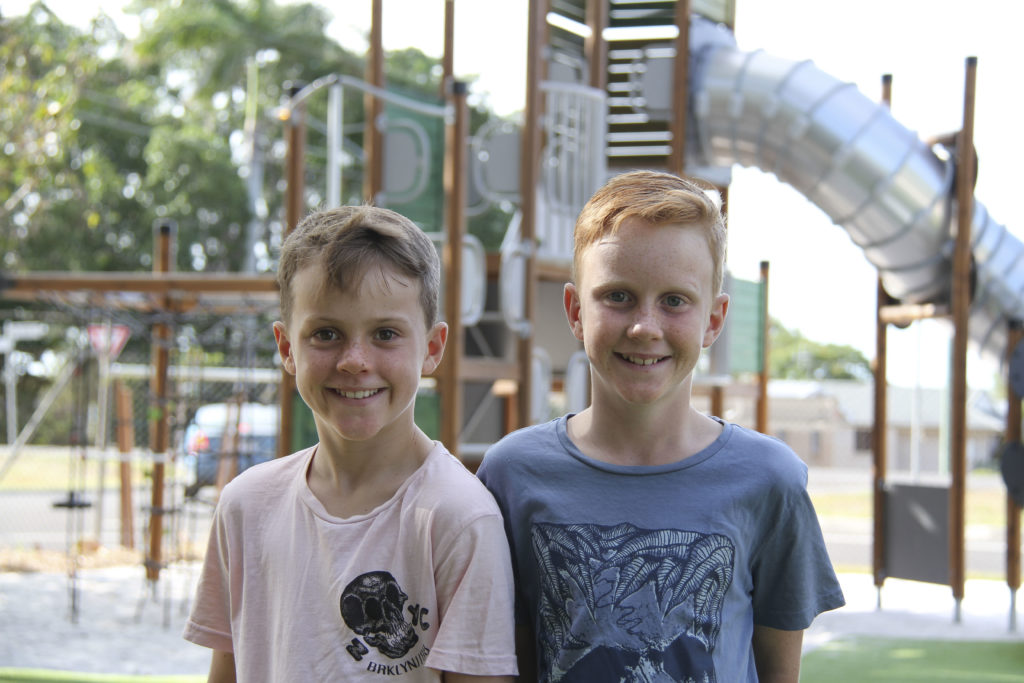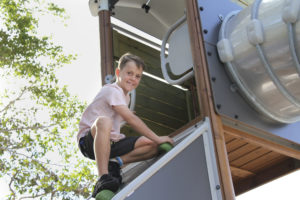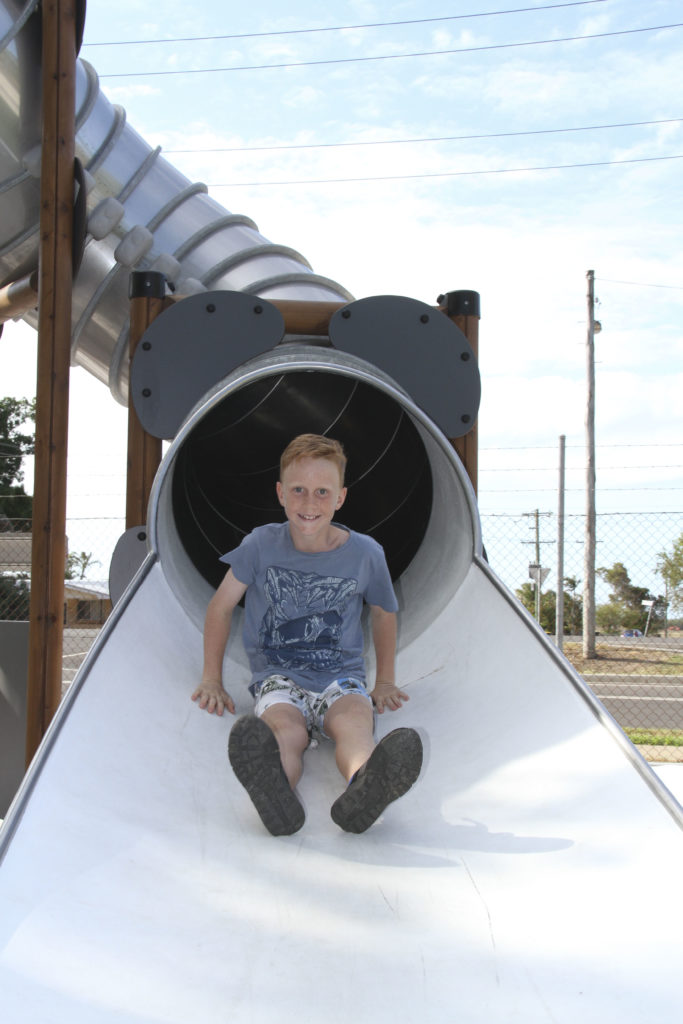
The thrill of sliding, the excitement of clambering over a net and the feeling of success when the summit is reached — they’re all experiences that most of us have as children.
A few years ago, authorities moved to eliminate playground risk, fearing litigation from people who sustained injuries.
Experts now believe they went too far; kids were being wrapped in cotton wool and shielded from learning important life skills.
It’s important to distinguish between risk and hazard.
Playgrounds are a place for children to have fun, but they can also provide opportunities to build resilience and confidence.
Bundaberg Regional Council is using best practice advice and techniques to introduce the concept of risk safely into local playgrounds.
This includes the slide tower at the new Botanic Gardens playground and the climbing net at Millennium Park, Childers.
Operational supervisor of parks planning and projects Carla Colasimone said there’s growing recognition of the value of risk in play.
“Our playgrounds are purpose built, controlled and safe environments for children to test the boundaries of their abilities,” Ms Colasimone said.
“While playground manufacturers work to ensure the actual risk is insignificant, the perceived risk of the challenge to the child allows them to overcome fears and gives them a feeling of achievement.”
She said Council was developing its philosophy around the inclusion of risk in playgrounds based on this growing industry trend.
Botanic Gardens playground

The Botanic Gardens nature play park features a towering tunnel slide. To reach this pinnacle of play, children must first scale two sloping rock climbing platforms with a small gap between them.
While the tower may provide nervous parents with a few heart flutters, playground supplier Austek Play, which supplies and installs equipment throughout Australia and internationally, explains the safety principles that go into designing “risky” play features.
- The risk is apparent and foreseeable to users and supervisors.
- Access to this point is not easy, ensuring those users who may wish to attempt the challenge have a higher level of ability.
- The access from the platform to the activity is restricted to a narrow opening, to ensure users are focused on the activity.
- The two climbing blocks are off-set to reduce the risk of falling.
- The ground surface beneath the combination has the fall protection required for this height of activity.
Educator supports risk in play
Cradles to Crayons director Kathryn Broad said it’s important for parents not to become “risk averse”.
“Children need to feel that thrill of overcoming their fear and launching into the unknown to master a new skill or experience,” Mrs Broad said.
“Children who have opportunities to effectively assess and manage risk at an early age will be better equipped to deal with risk as an adult.

“Risky play helps to develop important life skill learnings such as building resilience and persistence.”
Mrs Broad said research suggested there was a connection between successful physical risk-taking and a willingness to undertake risks in other areas of learning.
She said increasingly rigorous safety standards in our playgrounds may have implications for children.
“We want this generation of children to be able to respond to their instincts and gut feelings,” she said.
“This can be encouraged by allowing children to participate in risky play.”








Yay, kids can be kids again, yippee!
Looks like a good playground. The country needs more equipment like that to play on.
Comments are closed.